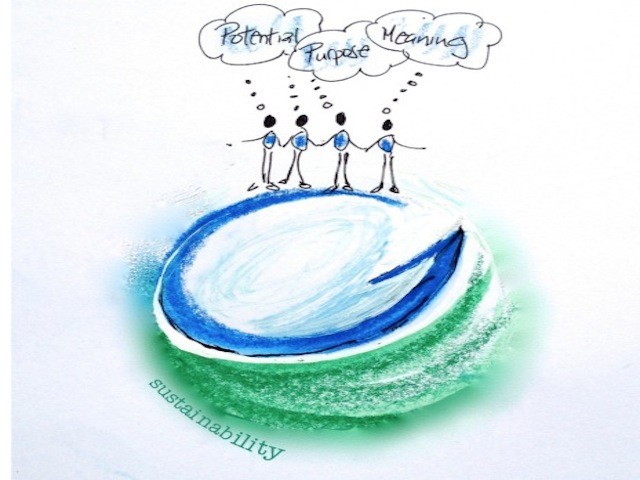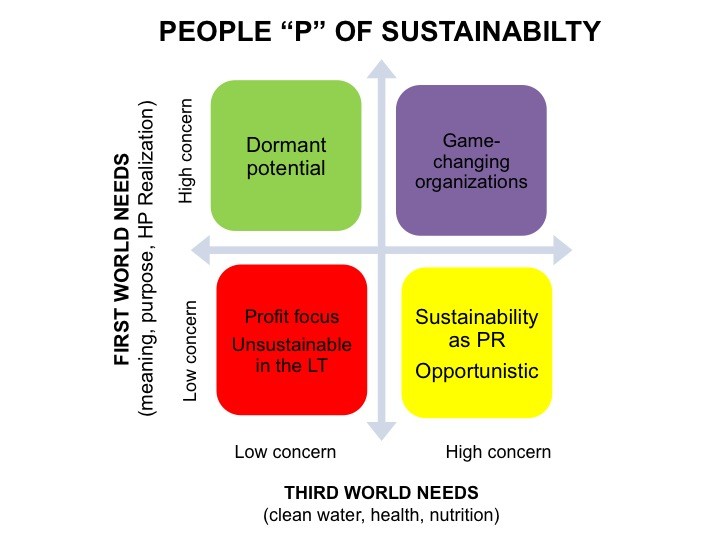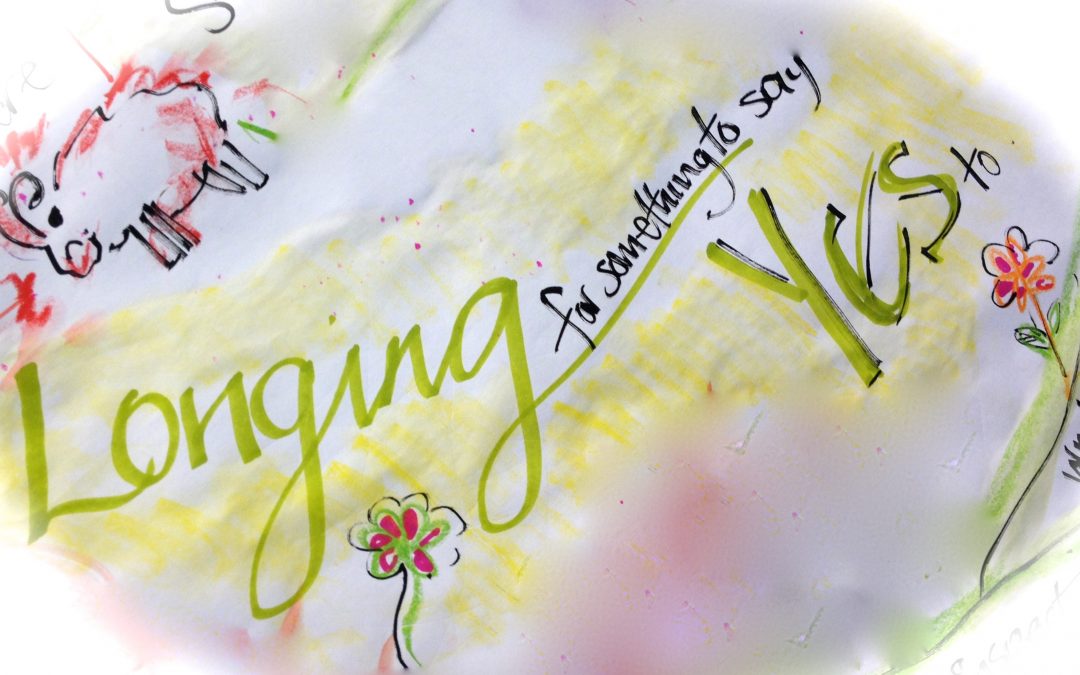In this 3-part series we share the insights that emerged from our Human Potential Summit in September. During these two and a half days, 20 visionary change-makers came together to look at the theme of SUSTAINABILITY through fresh eyes. We took an honest look at the current state of affairs, painted a compelling vision of a future reality and experimented with new mindsets, language, behaviours and rituals. In the depth of this experimentation we discovered what it takes to move from a Sustainability to a Thrive-Ability paradigm.
In this first part we break down all the different ways in which Sustainability can drive the performance of an organization and highlight the one area with the greatest opportunity for incremental value creation: greater levels of HUMAN POTENTIAL Realization.

PART 1: ASSESSING THE SUSTAINABILITY LANDSCAPE:
Most of us are aware of the “3 P’s” of Sustainability: Planet, People & Profit. The assumption is that when an organization successfully nurtures the first 2 P’s (People & Planet), profitability and long term success will ensue. Although this makes sense at a conceptual level, it’s not always easy to see how this breaks down into concrete opportunities for a business (especially in an environment with high pressure for short term results).
Perhaps the most obvious, and as a result the most exploited area of sustainability, has been cost saving initiatives. For example when a company reduces the amount of packaging used for its products, it simultaneously uses less resources (good for the environment) and saves cost (good for the bottom line). So far most sustainability initiatives have fallen into this category.
This is just the tip of the iceberg though. There are many more opportunities to harness sustainability initiatives for the long term benefit of an organization. One in particular has the potential to generate significant incremental value to both the organization and society at large. It is the least understood of the categories and therefore also the most underexploited. We call it the “Top of the pyramid People P” and it is the key to move from a SUSTAINABILITY paradigm to a THRIVE-ABILITY one.
The main objective of this paper is to illuminate what this means, why it is important and what we have learnt about what it takes to bring the “top of the pyramid People P” to life in the organizational context. However, before doing this we will create a comprehensive map of all the different ways in which sustainability initiatives breakdown into concrete business opportunities. In total there are four:
- Cost savings
- Revenue generating
- Market expansion
- Breakthrough innovation
The first two fall under the “Planet P” and the latter two under the “People P”. When implemented correctly all of them have the potential to grow the “Profit P” of the organization.
PLANET P TO PROFIT P
Cost saving:
In the introduction we talked about cost saving initiatives and how they can simultaneously benefit the environment and the bottom line (for example: packaging & waste reduction, recycling, alternative energy, technology upgrades etc…). It is critical that these kinds of projects are invisible to the end consumer. In other words the cost saving should not have a negative effect of the usage experience otherwise there is a risk that the profit generated from the cost saving will be offset by a lower purchase rate. The benefits from these kinds of initiatives have been highly exploited.
Revenue generating via additional benefit:
There are also quite some companies who have managed to create new revenue streams based on products that deliver an additional benefit, while at the same time having a positive impact on the environment. For example, organic food has both a health and planet benefit. Energy efficient appliances or electric cars also fall into this category. These types of products often appeal to more affluent consumer groups and therefore can priced at a premium.
PEOPLE P TO PROFIT P
Market expansion:
This next category is all about raising the “bottom of the pyramid People P” (ie: people who’s basic needs are not yet being met). For example when sustainability initiatives help developing countries lift out of poverty and gain access to basic needs such as healthcare, food, clean water and sanitation, their standard of living increases and at the same time they become potential consumers for the products and service we are accustomed to in the West.
Breakthrough innovation:
Finally we look at the “top of the pyramid People P” category. This refers to all of us who have our basic needs met and are aspiring to more meaning and purpose in our lives. Promotions and salary increases are no longer effective incentives. Today’s workforce wants to be inspired and challenged to think beyond the current limitations of what we believe is and isn’t possible. They are full of ideals, and ideas, on how to do business in service of a greater good.
However, with employee engagement scores at an all time low, vast amounts of creative human potential remain unexpressed in most organizations. The cost to society is very high. Not only does it lead to burnouts and stress within families, but it is also preventing us from creating the solutions for a world that truly works for everyone. Did you know that on average only 50% of people’s potential is being utilized? Just imagine what would be possible when an organization is able to move from an average human potential utilization of 50% to 80 or 90%. Imagine the creative breakthroughs, and new business opportunities, that would emerge from that! This is what we refer to as the THRIVE-ABILITY paradigm (vs SUSTAINABILITY).
In the diagram on the below we look at how these two PEOPLE P dimensions inform the extent to which an organization is expressing its THRIVE-ABILITY potential. The horizontal axis represents the amount of concern an organization has for third world People needs (or bottom of the pyramid People P) and the vertical axis looks at the attention given to first world People needs (top of the pyramid People P). The opportunity for breakthrough comes at the intersection of these two axis – when the organization has created an environment where people feel empowered in bringing their full potential selves into work and at the same time find ways to channel this passion to benefiting society at large.

SUMMARY

In parts 2 and 3 of this paper we will explore in much more details WHY it is imperative that we move from a SUSTAINABILITY to a THRIVEABILITY paradigm, WHAT it means and, most importantly, HOW organizations can create the conditions for greater levels of Human Potential realization.

